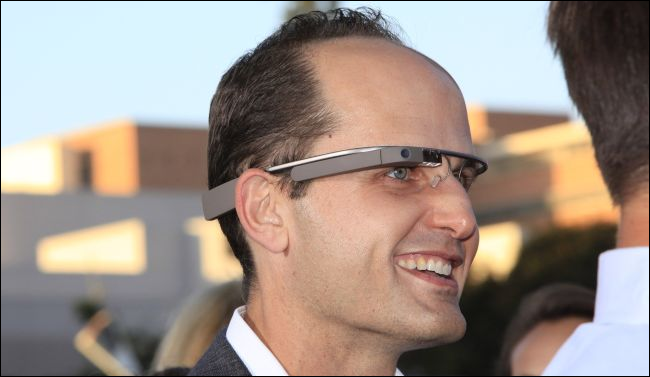
Google Glass lived a short, sad life. And when you look back, it feels like a bit of a dream. But the dream isn’t over yet, because Glass has found itself an industrial career.
Why Glass Failed as a Consumer Device

There was a lot of hype around Google Glass when it was announced in 2012. It was featured in TIME magazine, endorsed by celebrities, and touted as the future of smart devices. But the smart eyewear was ridiculed by the media, and it became a big joke in the public eye. Google made some awkward attempts to keep the public interested in Glass (they put Google Glass in the shower, and they interrupted a Google+ keynote to push Glass wearers out of an airplane), but the Glass never picked up steam, and its public life ended in 2015.
Why did it fail? For one, nobody knew what Glass was supposed to do. Google itself couldn’t seem to find any uses for the product. Instead of developing life-changing software to show off the Glass’ capabilities, they released some awkward videos that made the Glass seem like a dorky extension of your cellphone. Customers that were part of the “Explorer” program (anyone that bought the device) were encouraged to build software on their own, a prospect that would be more exciting if the device cost less than $1500.
But most of the Glass’ woes were related to privacy and safety issues. The Glass was equipped with a camera, and people were understandably afraid of a future where anybody can walk around with a camera on their face. There was no way to tell when somebody was using their Glass to record video or take photos, so people assumed that Glass users were recording everything. A lot of states banned people from wearing the Glass while driving, because it’s an obvious visual distraction, and a lot of businesses (movie theaters, especially) banned the device because of its camera.
This isn’t to say that Glass is a bad piece of hardware; it just wasn’t ready to be thrown into the consumer market. If anything, the product was still in a beta mode. It had a lot of obvious kinks that Google needed to work out. The device’s safety and privacy issues were also legitimate and predictable, and Google should’ve taken the time to consider them before giving the product so much publicity.
How Glass Quietly Joined The Workforce

While Glass was publicly floundering, Google was quietly testing it in the world of industry. Google’s “build your own apps” approach didn’t appeal to many consumers, but it sounded like a good deal to some corporations. Early adopters, like Boeing, could afford to drop thousands of dollars on smart glasses, and they had the resources to develop some useful software.
When Google noticed that Boeing and other corporations were much more interested in Glass than your average consumer, they leaned into it. After the Glass Explorer program came to a close in 2015, Google began work on an “Enterprise” edition of the device—a version that’s built specifically for industrial use, yet addresses most of the problems that people had with the Glass.
Glass Enterprise is a lighter, more comfortable pair of glasses than the Explorer edition. It has a battery life that exceeds eight hours (perfect for holiday shifts at a warehouse), and it’s equipped with an LED that tells others when you’re taking photos or recording video. The Glass Enterprise hardware is also a lot more flexible than the Explorer edition. People can remove the Enterprise from its standard glasses frame and attach it to safety glasses or the inside of a helmet.
You could theoretically use the Glass Enterprise while wearing sunglasses, safety glasses, or even a pair of goggles.
Glass Enterprise Cuts Costs and Increases Safety

Read the remaining 13 paragraphs
Source : Google Glass Isn’t Dead; It’s the Future of Industry











